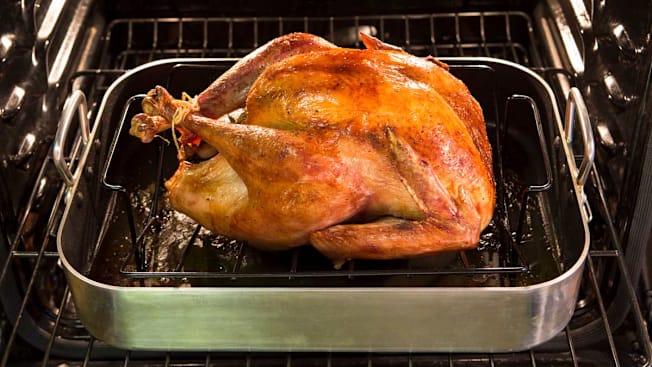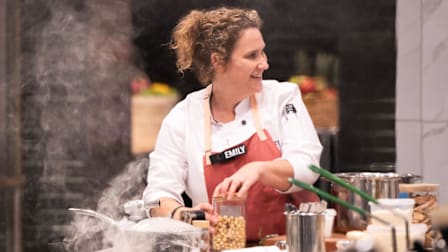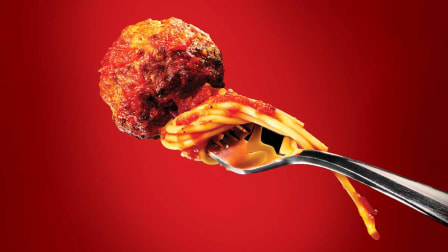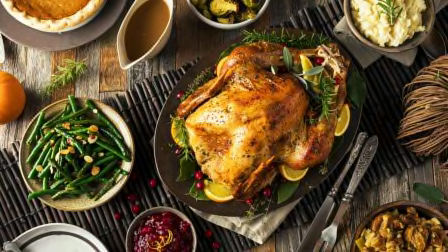The Best Way to Cook a Turkey
CR's experts show how to make your holiday bird delicious and share smart food safety tips

Even if you’ve made a few Thanksgiving dinners before, cooking a turkey can be a bit stress-inducing. After all, the holiday is known as Turkey Day, and many of us roast only one big bird a year. But relax—CR’s food and nutrition experts are here to guide you through the steps from buying the turkey to handling the leftovers.
Choose the Right Size
Whether you opt for a fresh or frozen turkey, plan on about 1 pound per person. That provides each guest with three-quarters of a pound of meat, according to the Department of Agriculture, and leaves some for leftovers. If you’re hosting a crowd, rather than serving one large turkey, consider cooking two smaller ones, or a whole turkey and a turkey breast. A very large bird can be harder to handle and takes longer to cook.
Leave Time to Thaw
If you buy a frozen bird, plan to thaw it in a refrigerator set to 37° F. You will need 24 hours for every 4 to 5 pounds. “A 16-pound turkey will take about four to five days to thaw in the fridge,” says Sana Mujahid, PhD, manager of food safety research and testing at Consumer Reports. “Leave the turkey in its original wrapper and put it on a tray on the bottom shelf of the refrigerator. As it thaws, some water and juice could leak out of the plastic wrapping, and you don’t want that to get all over the fridge, spreading bacteria onto surfaces and other foods.” It’s safe to leave a thawed turkey in the fridge for a day or two before cooking.
Don't Give the Bird a Bath
“You can’t wash off bacteria with water, and rinsing out the turkey risks splashing its juices all over the sink,” Mujahid says. Instead, open the plastic wrap carefully and drain any liquid into the sink before discarding the wrapper. Pat the turkey dry, inside and out, with paper towels. Wash your hands and any utensils, using hot water and soap.
Don't Stuff It
The safest way to cook stuffing is outside of the turkey. Stuffing can absorb the juices from the raw turkey, and if it doesn’t get hot enough (165° F), you and your guests could be susceptible to food poisoning. Cooking the bird until the stuffing is safe will likely result in overcooked meat.
If you choose to stuff the turkey anyway, there are a few things you should do to keep it safe. Don’t stuff it until you’re ready to cook and fill the cavity loosely. Check the temperature of the stuffing when checking the temperature of the meat to ensure it reaches 165° F. Leave the stuffing in the bird while it rests (see below), but then remove the stuffing completely.
Rack It Up
Using a roasting rack allows hot air to circulate around the turkey, which results in a more even roast. If you don’t have one, you don’t need to rush out to buy one, says Amy Keating, RD, a Consumer Reports nutritionist. All you want to do is raise the bottom of the turkey from the roasting pan. You can use a baking cooling rack. Or make your own rack by laying carrots across the bottom of the pan or scrunching aluminum foil into a log shape and then into a circle or spiral and placing the turkey on top of that.
Time It Right
Turkey takes about 15 minutes per pound to cook at an oven temp of 325° F. You may have heard that cooking turkey long and slow (at a lower oven temperature) results in juicier meat, but for safety’s sake, you shouldn’t roast below 325° F. The chart below gives the USDA’s recommended cooking times for fresh or thawed whole birds. (Interested in cooking Thanksgiving dinner on a grill? Check out CR’s expert tips.)
| Weight | Roasting Time (Unstuffed) | Roasting Time (Stuffed) |
| 8 to 12 pounds | 2¾ to 3 hours | 3 to 3½ hours |
| 12 to 14 pounds | 3 to 3¾ hours | 3½ to 4 hours |
| 14 to 18 pounds | 3¾ to 4¼ hours | 4 to 4¼ hours |
| 18 to 20 pounds | 4¼ to 4½ hours | 4¼ to 4¾ hours |
| 20 to 24 pounds | 4½ to 5 hours | 4¾ to 5¼ hours |
Watch the Temperature
A crispy, golden-brown exterior may be your goal, but it’s the interior temperature that really matters. Too low and you risk food poisoning; too high and your bird may look a lot better than it tastes. Wiggling a drumstick or checking to see if the juices run clear aren’t reliable ways of telling whether a turkey is done. Neither is checking the color of the breast meat—in fact, that can even lead to an overdone bird. Turkey meat can have a pink color even if it’s fully cooked, the USDA says. According to the agency: "Scientists have found that pinkness occurs when gases in the atmosphere of a heated gas or electric oven react chemically with hemoglobin in the meat tissues to give poultry a pink tinge."
The safe move: Use a meat thermometer. The turkey is done when it reaches a temperature of 165° F. Note: CR’s tests have found that pop-up thermometers that come with many turkeys aren’t 100 percent accurate.
Learn Correct Placement
When you take your turkey’s temperature, remove it from the oven and close the oven door to keep the heat inside in case you need to roast it longer. Insert an instant-read meat thermometer into the innermost part of the thigh and wing (not a drumstick), pushing it in about 2 inches and making sure you don’t hit a bone. Then check the thickest part of a breast, keeping the thermometer horizontal as you insert the probe. The temperature should read 165° F in both areas for safety.
Let the Turkey Rest
When the turkey has reached 165° F, remove it from the oven and let it rest, loosely covered, for at least 20 minutes to let the juices redistribute into the meat, Keating says. “That’s when you can make the gravy and finish up last-minute dishes.” Don’t let the cooked bird sit unrefrigerated for more than 2 hours, however. Any bacteria that may be present could multiply to harmful levels if the turkey is left at room temperature longer than that.
Carve Like a Pro
Carving is much easier to do in the kitchen than at the table. Use a sharp 8- to 10-inch chef’s knife. To hold the turkey in place, use a pair of tongs instead of a fork. Work on one side of the bird at a time, first removing the legs and then the breast meat in one big hunk. Follow the breast bone with your knife, cutting close, and then pull off the rest with your hands. Pull a little skin away to see how the grain of the meat runs and cut ¼- to ½-inch-thick slices across the grain, which helps hold in juices. Separate the thigh from the drumstick by cutting through the joint; slice the thigh meat but leave the drumsticks intact.
Ensure Tasty Leftovers
You can eat cooked leftover turkey cold, but if you’re reheating it, skip the microwave. Heating turkey in a microwave may dry it out. Warm the meat on the stovetop, adding a little broth or gravy to keep it moist.
Best Kitchen Tools and Appliances of the Year
Chef’s Knives • Coffee Makers • Cookware Sets • Dishwashers • Food Processors and Choppers • Food Storage Containers • Freezers • Microwaves • Ranges • Refrigerators • Toasters • Toaster Ovens • Wall Ovens




















